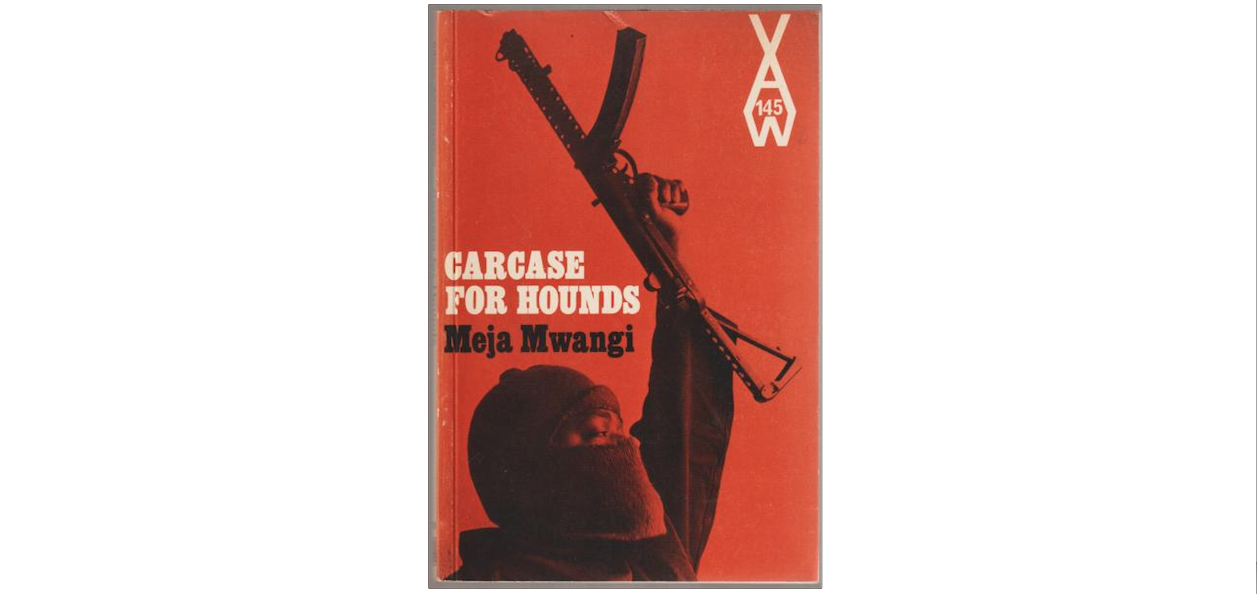

That is what Meja Mwangi achieves in Carcase for Hounds. His novel does not just depict the Mau Mau uprising, it drags you into its choking dust, its thickets of fear, and its blood-soaked silences. From the first page, you are less a reader than an unwilling witness, held captive by Mwangi’s relentless descriptive power.
Meja Mwangi does not simply tell a story; he renders it with such muscular precision that every scene feels almost cinematic, yet heavier than any reel of film could manage. His language is dense with texture: bark creaks, rifles bark back, dust eddies in the throats of men, and blood does not just spill but sticks.
What struck me most was Mwangi’s refusal to romanticise either side of the Mau Mau conflict. The guerrillas in the forest are at once terrifying and vulnerable, gaunt fighters who must scrape food from roots while dreaming of revolution.
The colonial forces, armed with helicopters and rifles, stomp through villages like gods of thunder, but their power is fragile, too, tinged with desperation and paranoia. Both sides bleed. Both sides grow weary. And Mwangi’s prose refuses to let you forget any of it.
His descriptive style is so in-depth that the smallest detail swells with significance. A hut is not just a hut; it is low smoke curling into thatch, the smell of goatskins, the slow collapse of mud under pressure. A gun battle does not simply break out; it erupts with the clatter of bone and brass, the forest coughing out echoes like an old beast woken from slumber. Mwangi writes as though he wants your senses ambushed, your imagination pinned down, until you feel the war’s grime under your nails.
For me, the most unsettling moments were not the firefights but the waiting. Mwangi lingers on anticipation with unnerving patience. He will spend a page tracing a silence in the forest — the hush of cicadas, the sudden absence of bird calls, the sweat beading on a soldier’s temple — before letting violence crash in.
That slow suffocation makes the eruptions all the more brutal, and it reveals Mwangi’s mastery of rhythm: he knows exactly when to stretch a moment and when to snap it.
Reading the novel, I often felt like I was caught in a drumbeat of exhaustion and fear. Yet, strangely, I could not look away. Mwangi’s descriptive language functions almost like a trap. It keeps you bound to the characters’ suffering even as you want to escape it. And in that tension lies the novel’s haunting power.
It also made me reconsider the neatness with which history is often told. Wars get boiled down into victories, treaties and dates. Mwangi refuses that. His detail insists on the mess, the rot, the animal edge of human endurance. He pushes you to confront not just what happened but how it felt, and that emotional truth lingers long after the novel is closed.
There is also something remarkable about how Mwangi handles scale. He can zoom out to panoramic shots of helicopters strafing valleys, the smoke curling upward like ragged banners of conquest, then snap suddenly to a single terrified fighter fumbling with his rifle. The effect is dizzying but deliberate, a reminder that wars are always both epic and intimate.
Carcase for Hounds is not about heroes or villains so much as it is about the scars that war carves into people and landscapes alike. Mwangi does not allow you to spectate safely from a distance; he drags you into the dust, into the silences that precede slaughter, into the smell of sweat and gun oil. His descriptive language binds you there, refusing to let you look away. You close the book not relieved but altered, carrying its echoes like shrapnel beneath the skin. That is Mwangi’s triumph: he makes memory impossible to escape.














